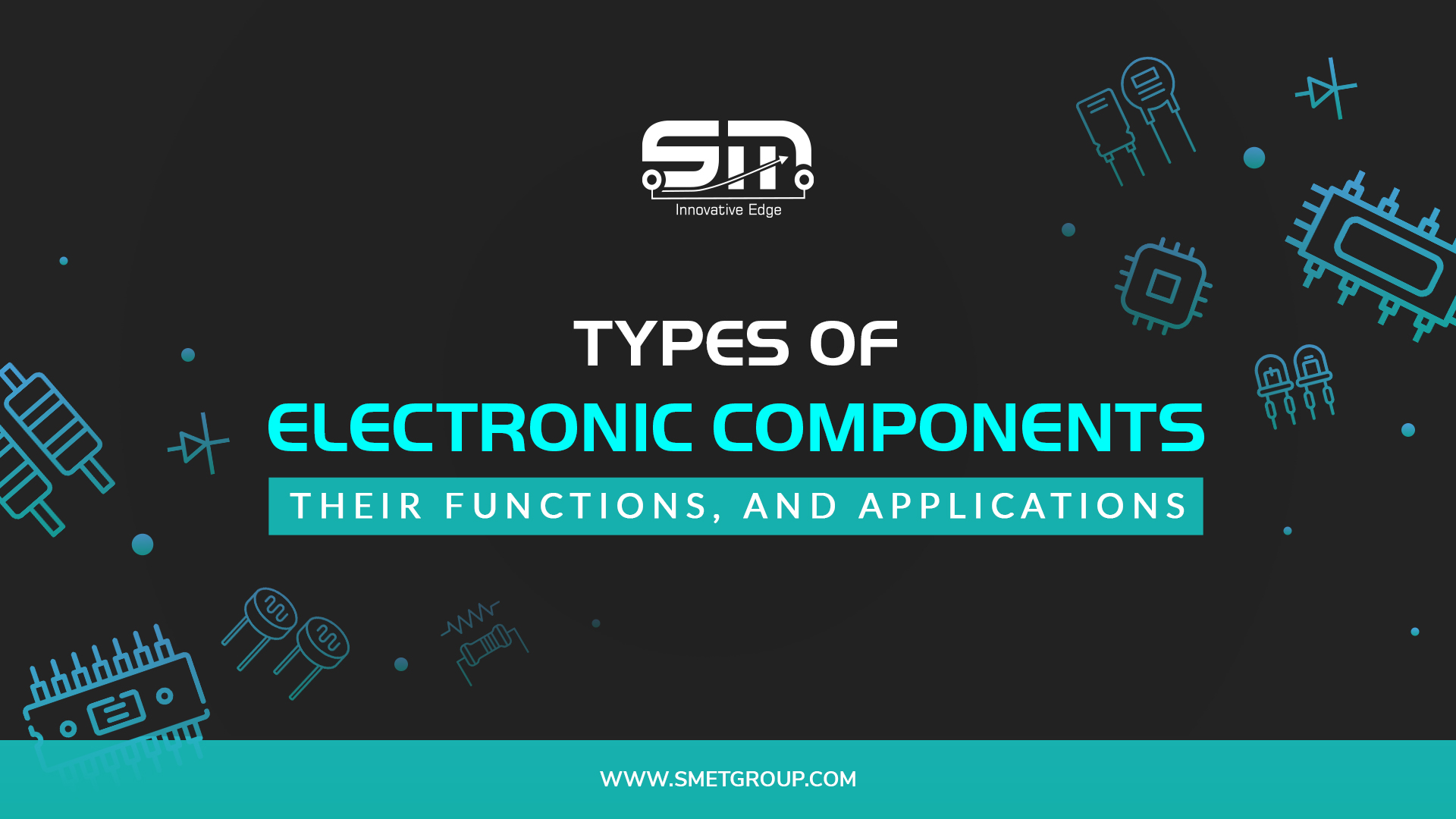Electronic components are the building blocks of modern electronic devices. Each component has unique characteristics and plays a specific role in electronic circuits. In this blog, we will explore various types of electronic components, their functions, and applications.
1. Resistors:
Resistors limit the flow of electric current in a circuit. They provide a specific amount of resistance measured in ohms (Ω).
Applications:
- Current Limiting: Protecting LEDs from excessive current.
- Biasing: Setting operating points for transistors.
2. Sensors:
Sensors detect changes in environmental conditions and convert them into electrical signals.
Applications:
- Temperature Sensors: Monitoring and controlling temperature.
- Motion Sensors: Detecting movement in security systems.
- Proximity Sensors: Used in touch-free interfaces and automation.
3. Capacitors:
Capacitors store and release electrical energy in the form of an electric field. Their capacitance is measured in farads (F).
Applications:
- Filtering: Smoothing out voltage fluctuations in power supplies.
- Timing: Setting time intervals in RC timing circuits.
- Coupling: Passing AC signals between stages while blocking DC.
4. Relays:
Relays are electromechanical switches that open and close circuits electromechanically or electronically.
Applications:
- Automation: Controlling high-power devices with low-power signals.
- Protection Circuits: Isolating different parts of a circuit.
- Remote Control: Operating devices over long distances.
5. Inductors:
Inductors store energy in a magnetic field when electric current flows through them. They resist changes in current.
Applications:
- Filtering: Used in power supplies to smooth out current.
- Tuning Circuits: In radio-frequency circuits for selecting desired frequencies.
- Energy Storage: In switching power supplies.
6. Diodes:
Diodes allow current to flow in one direction only, providing unidirectional current flow.
Applications:
- Rectification: Converting AC to DC in power supplies.
- Protection: Protecting circuits from voltage spikes.
- Signal Demodulation: Extracting audio from radio signals.
7. Transistors:
Transistors can amplify electrical signals or act as switches. There are 2 main types: Bipolar Junction Transistors (BJT) and Field Effect Transistors (FET).
Applications:
- Amplification: Increasing signal strength in audio and RF circuits.
- Switching: Digital logic circuits and power control.
- Oscillation: Generating AC signals in oscillators.
8. Integrated Circuits(Ics):
ICs are compact circuits with multiple electronic components (transistors, resistors, capacitors) integrated into a single chip.
Applications:
- Microprocessors: The brain of computers and smartphones.
- Memory Chips: Storing data in computers and other digital devices.
- Operational Amplifiers: Amplification and signal conditioning.
9. Connectors:
Connectors are used to join electrical circuits together.
Applications:
- Data Transmission: Connecting computers and peripheral devices.
- Power Supply: Providing power connections in various devices.
- Modular Design: Enabling easy assembly and repair of electronic devices.
10. LEDs (Lighting Emitting Diodes):
LEDs emit light when current flows through them, converting electrical energy into light.
Applications:
- Displays: Used in screens and digital displays.
- Indicators: Signaling power status in electronic devices.
- Lighting: Energy-efficient lighting solutions.
Understanding the functions and applications of various electronic components is crucial for designing and troubleshooting electronic circuits. Each component plays a vital role in the functionality of modern electronic devices. Whether you are a beginner or a professional, all of these components is fundamental to your success in electronics.

